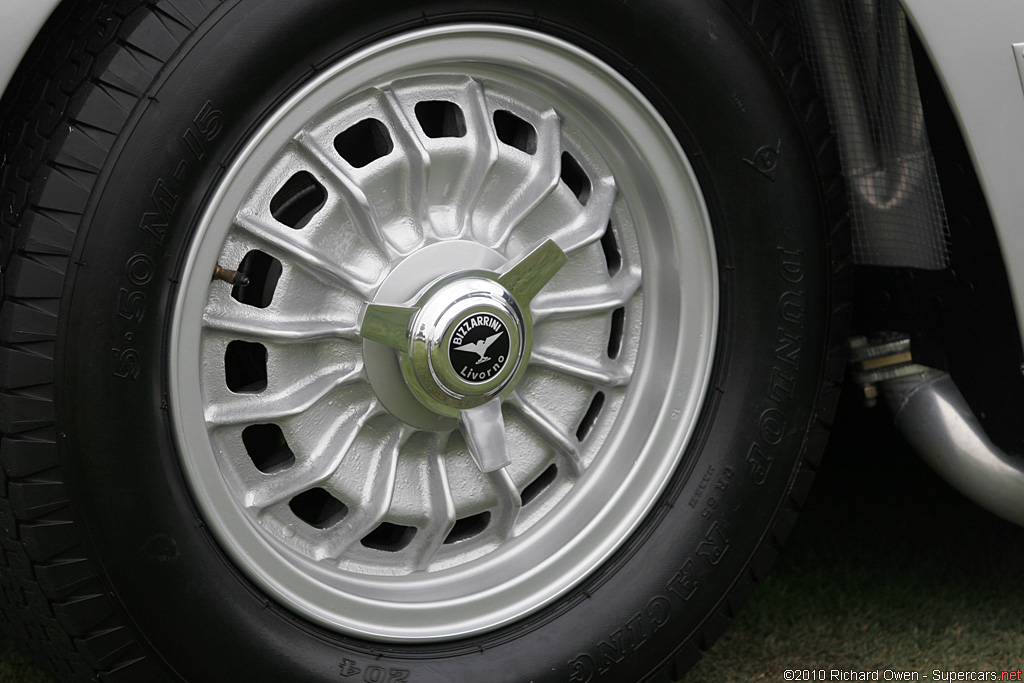The amazing
Bizzarrini
Giotto
Bizzarrini was born on 6th June 1926 in Livorno province Italy and
in 1953 he graduated from an engineering college in Italy. He first was working
for Alfa Romeo when Ferrari noticed his skill and appointed him as the Chief
engineer for Ferrari’s race team. Bizzarrini was known in Alfa Romeo for
developing the Giulietta’s chassis. He left Alfa in 1957, and joined Ferrari,
he played a major role in the development of the 3L V12 engine in the Testa
Rossa, his master piece however was the 250 GTO and the 250 SWB (short wheel
base Berlinetta). The 250 GTO was a solution to the problem that the 250 SWB
had created, that being the reduced top speed due to drag.
| The interior of the strada version |
Bizzarrini was
one of the important people who left Ferrari as part of the palace revolt,
which saw the entire Ferrari race team leave.
This revolt lead to the formation of ATS (Automobili Turismo Sportin)
1961. Soon Bizzarrini left ATS, when he was part of ATS he worked on a project
commissioned by Renzo Rivolta, who asked him to
build a GT car, a shortened chassis of this GT lead to the Iso Grifo.
 |
| The 1968 Iso Grifo |
Another car that
arrived due to the “palace revolt” was the 2819GT. The French press called this
car 'la Camionette'. The term 'Breadvan’, this name was given by English news
journals who were sceptical about the car’s performance. This was one of the
first few front mid-engine v12 cars, built in a record breaking 14 day.

Bizzarrini’s
cars
Bizzarrini split
from Renzo Rivolta and built the A3s as a road going car, it was renamed as the
Bizzarrini 5300 GT, the car was a stunner to look at and was powerful. The
front/mid-mounted 5.3-litre Chevrolet V8 engine promised 355 to 400HP. It was a
true racing car for the street. Having learnt from the 250 GTO, Bizzarini placed
the V8 further back. The result was seen
in the handling department. The body was made out of aluminium and fiber glass
combination. The car rode on very sophisticated independent suspension, four-wheel
Dunlop disc brakes and a BorgWarner T-10 four-speed. All this meant that the
car was hassle free to maintain.
 |
| Front mid-engine design |
 |
As a designer
and a car enthusiast the styling is something that a Bizzarrini never lacked.
The car started the trend of cars being lob sided on the sides for better
aerodynamic along with the curved arches, it was just a stunner. The Bizzarrini
was actually rarer than the Ferrari 250 GTO, it is hard to give exact numbers. This
is a sports car and it looks the part due to Giorgetto Giugiaro who was then at
Bertone. It will be a car that will continue to go up in value, maybe not as
much as other Italian sports cars as it has an American motor and not an
Italian V12. However, for me I prefer the Bizzarini over the 250 GTO.
 |
| known as the rivet car it is the predecessor to 5300 GT |
 |
| The End |
Very informative. Keep it going
ReplyDelete